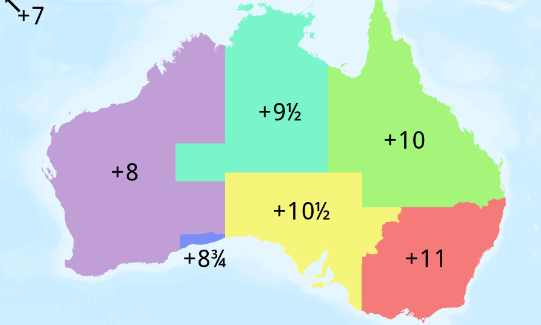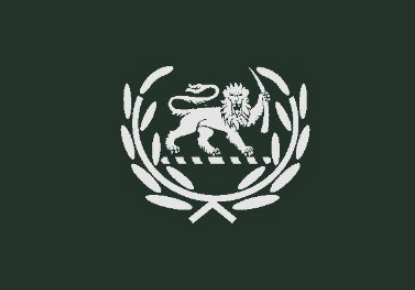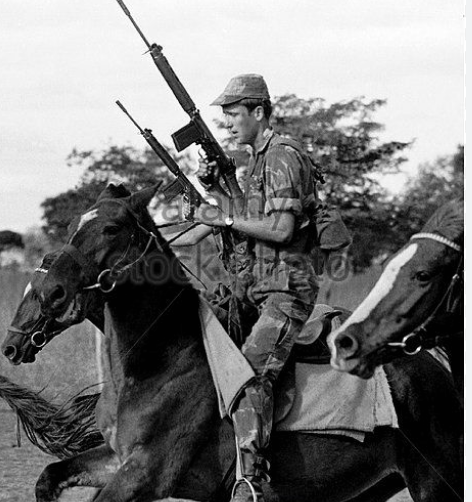 |
| Time Zones Around the World |
Thank you to Ray Robinson and Jeff White for sharing this week's program on Time Zones - something every radio listener has experienced.
Jeff: According to the encyclopedia, time is one of the world's deepest mysteries and it defies complete understanding, as also do magnetism, gravity and electricity, even though we all use them. Time has been measured for millennia by the calendar and sun dials, and for the past few centuries more precisely by the clock. But as recently as 1883, there were over 100 different time zones in use by the railway systems in the United States alone, and many other countries throughout the world shared similar time zone problems. So, this week, Ray Robinson takes a look at some of the peculiar time zone anomalies that have occurred historically and, in some cases, still exist today.
Ray: Thanks, Jeff. It was during that year, 1883, on November 18 to be exact, that the continental United States and Canada were first divided into five time zones, each one hour apart. This concept of establishing time zones was accomplished through the endeavors of the Canadian physicist, Sir Sandford Fleming.
Then during the following year, 1884, the entire world was divided into 24 time zones, each one hour apart and covering approximately 15° of longitude. These distinctions were based upon the location of the Greenwich Observatory in England, hence the older term, GMT, standing for Greenwich Mean Time. These days shortwave radio uses the abbreviation, UTC, standing for three French words which are translated into English as Coordinated Universal Time.
However, even though the world was coordinated into 24 time zones, there were some strange anomalies in the expression of time that were very difficult to interpret. A radio document printed in 1931 lists a whole slew of unusual time zones around the world, from which we take the following information.
Across North America, the observed time zones were all at exact hourly intervals from UTC. But during that same pre-War era, two notable territories were observing their own standard time, at a half hour difference from standard time. At midday in London, it was 1:30 am in Honolulu, Hawaii, and 9:30 pm in New Zealand.
There were also some quite strange time zones listed in different countries in 1931:
At Midday in London, it was 9:07 am in Rio de Janeiro, Brazil
7:17 am in Valparaiso, Chile
12:17 pm in Paris, France (17 minutes later than in London)
11:24 am in Lisbon Portugal (36 minutes earlier)
6:31 am in Havana, Cuba
1:34 pm in Athens, Greece
4:51 pm in Bombay, India
Back in 1931, listeners to shortwave stations around the world had to know what the local time was in the country they were listening to, and then re-calculate that to their own local time, which sometimes was quite complicated. The practice of using GMT/UTC on shortwave didn’t really become commonplace until the late 1930’s and the outbreak of World War II.
Time zones, of course, can be quite contentious. As far back as the early 1890’s, Central European Time was adopted by the Austro-Hungarian Empire, the German Empire, Serbia, Malta, Italy, Switzerland, Norway, Sweden and Denmark. During World War II as the Nazis began invading countries to the west of Germany, one of the first things they did was put them all on “Berlin Time,” or CET. The Netherlands, Belgium, Luxembourg, France and the British Channel Islands were thus all forced to adopt CET when they were invaded in 1940. Spain also switched to CET, but voluntarily, and the tiny states of Monaco, Andorra and Gibraltar all adopted CET after the war was over. When the Channel Islands were liberated on May 9, 1945, they immediately switched back to London time.
Perhaps the strangest time zone of all was on the island of Newfoundland, off the east coast of Canada. At the time of confederation into Canada as a province in 1949, Newfoundland adjusted its time zone to match standard time in Canada by exactly 14 seconds, although at UTC -3½ hours, it is the only time zone in the Americas with a half hour offset from UTC.
Even today, if you’re traveling within the Continental United States, you can still come across some interesting time zone anomalies in the states of Arizona and Idaho. The state of Arizona does not make any change of time zone, and stays on Mountain Standard Time all year round. However, the territory within Arizona known as the Navajo Nation, which includes the enormous Monument Valley, does make the change to DST, Daylight Saving Time. But within the Navajo Nation, the enclave territory of the Hopi Nation, which is completely surrounded by the Navajo territory, does not observe this time zone change. Because of the complexity of the time zones in the area (Arizona state, Navajo Nation and Hopi Nation), the nearby small town of Tuba City observes both time zones simultaneously during the summer. This is mainly for the benefit of travelers passing through the area.
Now, up near the Canadian border, the far north of the state of Idaho observes Pacific Time, because the communities there are connected economically with the city of Spokane in Washington state to the west. The south of the state of Idaho observes Mountain Time, the same as in the adjacent state to the east, Montana. But, the time zone dividing line in Idaho is not a straight one. It runs along the Salmon River, and in places there are river communities which observe Mountain Time, even though there is Idaho territory away from the river to the east of them that is on Pacific Time.
In Canada, the city of Lloydminster straddles the border between the provinces of Alberta and Saskatchewan. The city of Lloydminster is just one city, not twin cities, with the provincial border running down the middle of the main street. This city observes just one time zone, not two, and they have chosen the Alberta time zone, Mountain Time, which is thus observed on both sides of the provincial border.
In Australia, the regional city of Broken Hill is within the state of New South Wales. However, it is close to the border with South Australia, and the people in this mining city observe South Australian time at UTC + 9½ hours, not the time zone of the state in which they are located, which is UTC + 10 hours.
We might also add that there is one odd time zone within the state of Western Australia. In the south east corner of the state, on the coast adjacent to the border with South Australia, there is a rural community of just some 200 people – Border Village and the town of Eucla. This community adopted its own time zone back in 1935, called Central Western Time, which has the peculiar time of UTC + 8¾ hours. Today that time zone is used in a number of communities along the Eyre highway, on both sides of the state border. Although not legally defined by the state or federal governments, the boundaries where it commences and ends are clearly understood and are frequently shown on road maps of the area. Road signs at the western end of the time zone advise travelers to adjust their clocks by 45 minutes.
Sign on the Eyre highway indicating the start of the unofficial Central Western Time Zone
Greenland is described as the world's largest island, though scientists tell us that if all the ice was melted, we would actually see Greenland as three separate islands, which today are covered by the one large ice sheet. Interestingly, in 1946, the United States offered to buy Greenland at a price of US$100 million. Donald Trump wasn’t the first to come up with that idea!
Well, on the island, or if you like, on the three islands of Greenland, there are just four main settlements with a total population of around 60,000. However, these four settlements each observe a different time zone. Throughout a complete year with summer and winter time, a total of five different time zones are in use in Greenland, running from UTC to UTC – 4 hours.
The comparatively recent nation of Bangladesh in Asia observes its own time zone of UTC + 6 hours. However, Bangladesh is almost completely surrounded by Indian states, all of which observe the Indian time zone of UTC + 5½ hours. Thus if you leave Bangladesh and travel west, north or east, you would set your watch back by half an hour.
Nepal, another Asian nation high up in the Himalaya, observes its own time zone of UTC + 5¾ hours. This places the time in Nepal at a quarter hour difference from nearby India. However, that time difference is a little easier to negotiate these days, than the earlier time zone in Nepal when they were just ten minutes different from India.
Most countries observe a time zone that is an equal hour from any of its neighbors. However, several countries do observe a half hour difference, such as India that we just mentioned, at UTC + 5½ hours. The Cocos Islands in the Indian Ocean observe UTC + 6½ hours, and Norfolk Island off the east coast of Australia observes UTC + 11½ hours. Interestingly, Lord Howe Island, an island off the coast of New South Wales, observes UTC + 10½ hours in the winter, and it changes just half an hour for summer time at UTC + 11 hours.
In addition to Nepal, there is another small territory that observes a ¾ hour difference from UTC – the Chatham Islands, a Pacific territory administered by New Zealand, which observes UTC + 12¾ hours.
The record for the most extreme time zone must go to the Line Islands of Kiribati, which observe UTC +14 hours, so that they can stay on the same calendar day as other parts of Kiribati to the west for administrative reasons.
In the far north of Scandinavia, there’s actually a place where you can be in three different time zones at the same time. It’s at a point where the territories of Norway, Finland and Russia come together near the small city of Nautsi in Russia.
Each year, there are two shortwave transmission periods, with period A running from the last weekend in October until the last weekend in March, and then period B between those same weekends, from March to October. However, in North America (in the USA, Canada, Cuba and northern Mexico) Standard Time only runs from the first Sunday in November to the second weekend in March. The twice-yearly practice of moving our clocks forwards or backwards one hour is something President Donald Trump has vowed to end, and the European Union is known to be considering the same. I remember as a teenager in England, there was an experiment with British Standard Time, UTC+1, which was adopted year-round for three years from 1968-1971, but pressure from people in the north of the British Isles brought that to an end. To abandon clock changing in the USA will require an Act of Congress, and currently Congress is tied up with other more pressing financial matters, so it may take until sometime next year before the Daylight Saving Time issue can be addressed.
Back to you, Jeff.












.JPG)






.jpg)



















